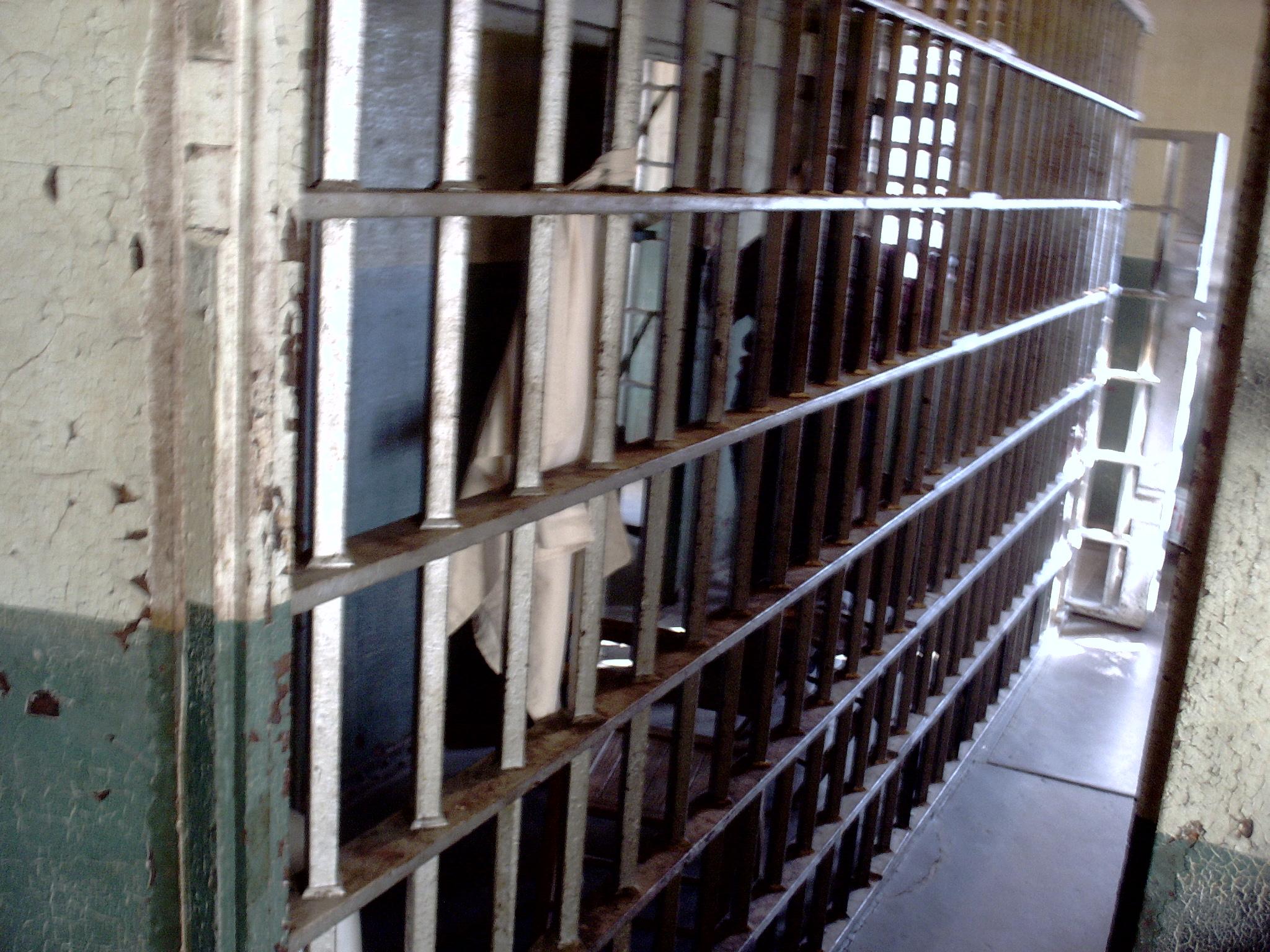The last person to be put to death by the State of North Carolina – in other words, put to death on behalf of all of us who live here and choose the leaders who write our laws – was Samuel Flippen, 36, who was given a lethal injection at Central Prison in Raleigh at 2 a.m. on Friday, Aug. 18, 2006 as his parents watched.
The execution was the final chapter in a sad tale – of that there’s no doubt. Flippen had been convicted in the courts of Forsyth County on charges of murdering his two-year-old stepdaughter, Britnie Hutton, in 1994. The little girl died en route to a hospital after Flippen summoned rescue workers, saying she had fallen over in her high chair. An autopsy disclosed injuries indicating that she’d been beaten.
Prosecutors successfully argued that the assault rose to the level of first-degree murder, involving premeditation and deliberation. A jury found Flippen guilty and recommended the death sentence. That sentence was vacated by the state Supreme Court because the jury had not properly weighed Flippen’s lack of a criminal record as a mitigating factor. But a second jury recommended the same sentence and this time it held.
Flippen never acknowledged responsibility for the death. But even if he had struck the child as the evidence tended to show, a reasonable argument could be made that the crime should have been treated as second-degree murder, which would have spared him from death row. In fact, the state had offered to let him plea to the lesser charge.
The case thus typified some of the worst aspects of a system that uses death as the ultimate punishment. If Sammy Flippen hit a little girl so hard that it killed her, he deserved a tough punishment indeed. But what if his lawyer had convinced him to take that plea bargain? Even stipulating that Flippen was a murderer, his eventual fate seems to have hinged on bad legal strategy and bad luck as much as any rational finding that his crime warranted execution.
Mounting doubts
In the years since 2006, public support for the death penalty has eroded. That reflects a growing unease with a penalty that’s not only arbitrary but also irreversible – while the headlines time and again have told of men released from death row because their convictions were tainted by prosecutorial misconduct or errors of law, or because they were shown to be innocent. It reflects the efforts by groups such as People of Faith Against the Death Penalty, originally a project of the NC Council of Churches, to highlight the inequities and ethical dilemmas posed by state-sanctioned killing.
Specific roadblocks also factor into North Carolina’s unofficial death penalty moratorium. Physicians have become reluctant to cooperate with the statutory rule that one of them be on hand to monitor lethal injections – a rule that essentially puts them in the position of helping to take a life.
Meanwhile, nationwide concerns about the injection process – with lawsuits alleging the possibility of unnecessary suffering in violation of the constitutional ban on punishments that are cruel and unusual – have resulted in an overall shortage of the drugs typically used. Manufacturers are queasy about having their products, intended for health care, used in death chambers.
With 149 people still facing death sentences here, death penalty advocates in the General Assembly are impatient with the delay. But legislation that cleared the state House on April 29 would represent a big step backward, not only in helping to restart executions but also in making the process even more objectionable from the standpoint of inmates’ rights and accountability to the public.
House Bill 774, sponsored by veteran Republican Rep. Leo Daughtry of Smithfield, would do away with the requirement that physicians monitor the administration of the lethal drugs. That role instead could be filled by a licensed physician assistant, nurse practitioner, registered nurse, emergency medical technician or paramedic.
Of course, the “monitoring” job could turn more complicated if, as has occurred in other states, the execution went awry because of a failure to properly insert I.V. lines, failure to inject a proper dose or another such mishap. Then the monitor would have to draw on his or her expertise either to continue the procedure, without in effect torturing the inmate, or to call it off. There’s a potential for a ghoulish travesty.
That potential rises because of another feature in the bill. No longer would the lethal formula be prescribed by law (“an ultrashort-acting barbiturate in combination with a chemical paralytic agent”). Instead, the state could choose to inject any “substance or substances in a lethal quantity sufficient to cause death…” so long as the procedure met constitutional standards.
Presumably a shot of rat poison wouldn’t qualify. But the bill would shield any identifying information about the source of the drugs. That would make it hard to reach an independent evaluation of the drugs’ effects and whether they involved the infliction of pain.
A Democratic-sponsored amendment to the bill (in fact a total rewrite) would have abolished the state’s death penalty and converted death sentences to life in prison without possibility of parole – on balance, a far better way to punish those who commit even the worst kinds of murders. But the amendment was withdrawn before it could be voted down.
Meanwhile, an amendment by Democratic Rep. Gale Adcock of Cary, a nurse practitioner who is the chief health officer at software giant SAS, would have taken nurses and physician assistants off the list of medical professionals who could be death chamber monitors. That would put them on the same ethical footing as doctors, and appropriately so. The amendment failed by a vote of 35-81 before the bill was approved 84-33.
How much pain?
By rueful coincidence, on the same day that HB 774 was being debated and passed, the U.S. Supreme Court was hearing oral arguments in a lawsuit involving the mechanics of lethal injections.
Three prisoners on death row in Oklahoma want the court to block the use of a sedative called midazolam, which is supposed to render an inmate unconscious before drugs that stop his heart take effect.
The complaint is that midazolam can’t be relied upon to block the pain when those killing drugs kick in. That seems to have been the case during three executions last year. Midazolam is used because the traditional death chamber sedative thiopental (a short-acting barbiturate of the kind North Carolina still requires) has become hard to obtain.
Justice Elena Kagan likened what could happen to an inadequately sedated inmate as being “burned alive from the inside.” But her conservative colleagues weren’t impressed. In comments from the bench, their impatience with death penalty critics boiled over.
“Let’s be honest about what’s going on here,” said Justice Samuel Alito Jr. “Executions can be carried out painlessly.” Maybe they can be, but will they? And Alito wondered, “Is it appropriate for the judiciary to countenance what amounts to a guerrilla war against the death penalty?”
That sounds like the frustrated cry of a judge who’d rather not have to wrestle with whether an execution method does in fact pose the risk of cruel and unusual punishment. But inmates and their lawyers who raise that possibility, thus delaying the death chamber parade, are simply asking that their constitutional rights be given due regard. If executions can’t take place without violating those rights, then let the executions lapse.
Might North Carolina authorities want to use midazolam in a death penalty revival? Daughtry’s bill would make it hard to find out. Look to the conservative Senate now to give the bill a smooth ride, foisting the issue on Republican Gov. Pat McCrory.
Perhaps it’s difficult to work up much sympathy for inmates who are in the fix they’re in because they killed someone, probably not worrying about the pain. But we shouldn’t follow Alito in chastising those who insist that even our worst criminals be treated in accord with constitutional standards of decency. If the death penalty collapses in North Carolina under the weight of legal challenges and shifting public opinion, as it has in several other states in recent years, that will amount to real progress toward a larger form of justice.


